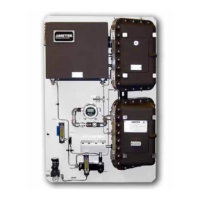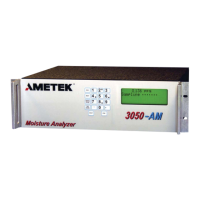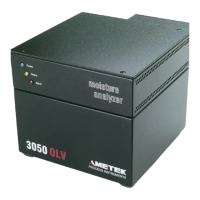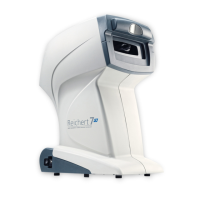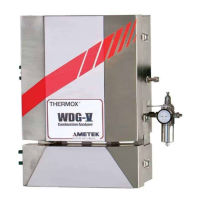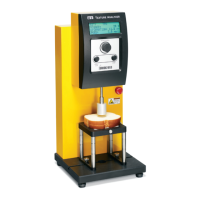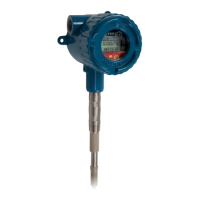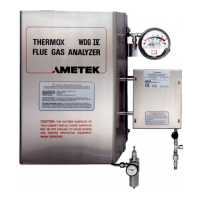3-48 | Model 931S / Model 932S UV Analyzers
3. Record these values in a log book every month.
It is important to record these values during a Manual Zero to simu-
late the same conditions during the original recordings. If the values
are recorded using the sample gas, the results may be skewed because
the composition of the gas can vary. All signals should return to
within 5 % of the values recorded the previous month.
Recording Initial Sample Response Time
The analyzer’s sample response time can be used for two functions:
• To help you set the sample gas flow rate.
• To help you determine if the typical response time is increasing, which
can indicate a plug in the sample system.
Typically, a good response time is approximately 15 seconds when the
sample system is clean and operating at peak efficiency (may vary due to
Sample Line length).
To check and record the initial sample response time:
1. Manually Zero the analyzer.
2. After the Zero is complete, view the Status tab and observe the out-
put concentration changes. Observe and record the time it takes the
analyzer to display the first reading after the analyzer’s Flow Control
mode is switched from ‘2’ (zero) to ‘0’ (auto – Automatic Analyzer
Control).
It is important to record the response time only after performing a
Manual Zero to simulate the same conditions during the original
recordings.
3. If the sample response time is adequate (first reading after a Zero and
after changing the Flow Control mode from ‘2’ to ‘0’ is approximately
15 seconds), no further adjustment is necessary.
The sample response time may vary, depending on Sample Line
length.
4. Record these signals in a log book every month.
NOTE
NOTE
NOTE
See “Manual Zero Gas
Calibration” in Chapter 5.

